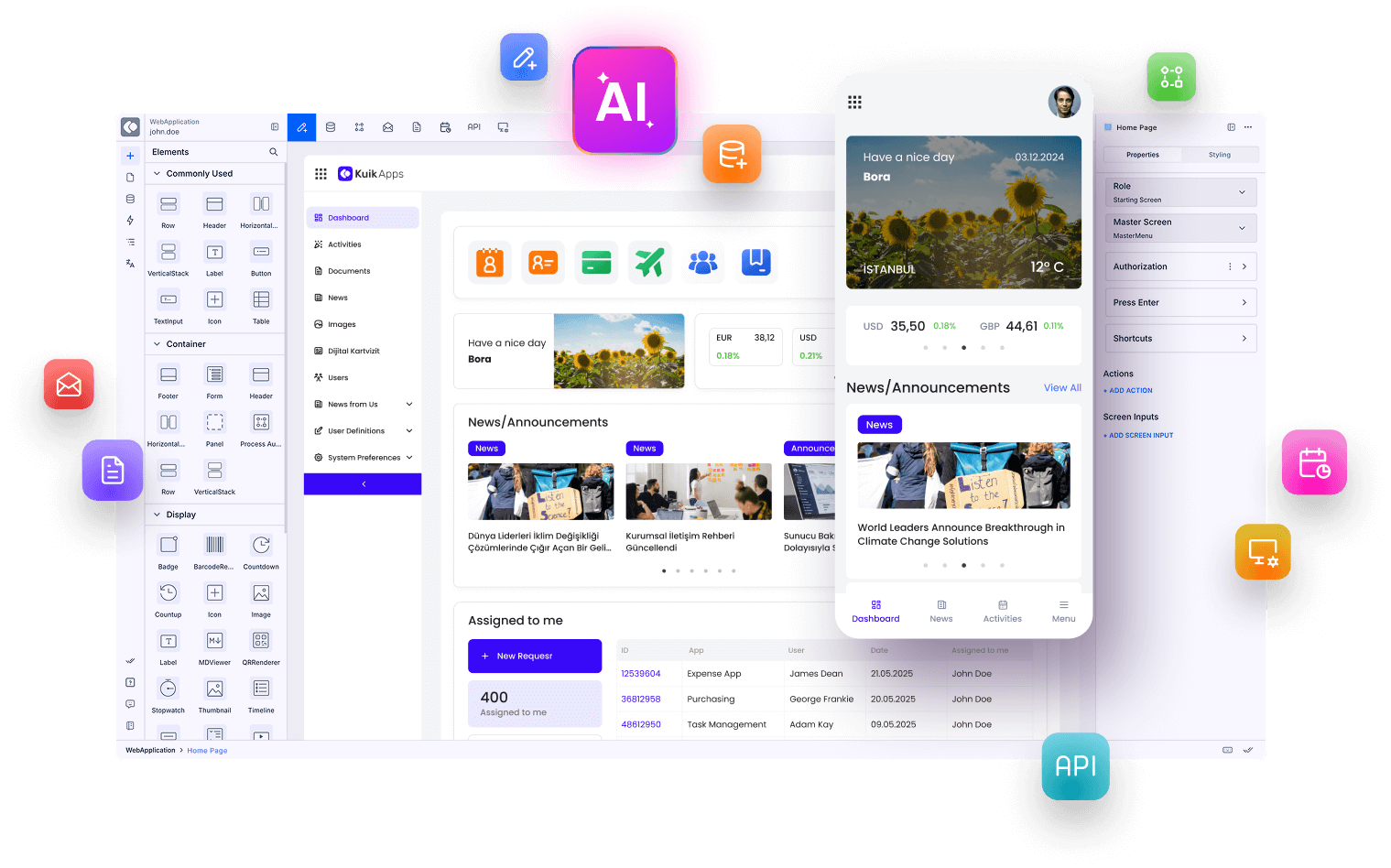Whether you're a small startup or a large corporation, finding ways to improve efficiency can:
- Save time
- Reduce costs
- Improve the quality of products and services
In this article, we'll explore some actionable tips to help you increase efficiency in your workflow management.
Why does workflow matter?
Workflow is the sequence of steps or tasks that make up a business process. It's the roadmap that guides how work is accomplished within your organization. A well-designed workflow ensures that work is carried out smoothly, consistently, and with minimal waste.
- Cost Savings: Efficient workflows reduce operational costs by eliminating redundancies, delays, and unnecessary steps, which can lead to resource savings.
- Improved Productivity: Streamlined workflows allow employees to focus on value-added tasks, increasing their productivity and job satisfaction.
- Enhanced Quality: Well-defined workflows reduce errors and ensure that work is performed consistently and to a high standard.
- Customer Satisfaction: Efficient workflows enable faster response times and better service delivery, leading to higher customer satisfaction.
Strategies for improving workflow efficiency
Identify and eliminate bottlenecks
Identifying and eliminating bottlenecks can increase efficiency because it helps to identify areas where work is getting slowed down or stuck. By streamlining these areas and removing the obstacles causing the bottleneck, work can flow more smoothly and quickly.
This can lead to faster completion of tasks and projects, which in turn can increase productivity and overall efficiency. Additionally, identifying and eliminating bottlenecks can help to optimize resources and reduce waste, further increasing efficiency.
Use visual process mapping
Visual process mapping provides a clear and visual representation of business processes. This allows for targeted improvements by identifying and targeting areas of work slowdown.
Additionally, visual process mapping can help to ensure that everyone involved in the process understands their role and responsibilities. Thus, you can reduce the risk of misunderstandings or errors.
Before making changes, you need to understand your existing processes. Create a detailed flowchart or diagram to visualize the current workflow. Specify bottlenecks, redundancies, and areas for improvement on the map.
Implement agile methodologies
Implementing agile methodologies allows for a more flexible and adaptive approach to project management. Agile methodologies lead to a more streamlined and efficient workflow.
Also, agile methodologies break down projects into smaller tasks, allowing for continuous improvement and timely completion of work.
Overall, implementing agile methodologies can help you to
- Respond more quickly to change,
- Improve productivity,
- Achieve greater success in your business processes.
Measure efficiency with Key Performance Indicators (KPIs)
Use key performance indicators (KPIs) to measure the effectiveness of your workflow improvements. Analyze the data to identify further areas for optimization.
Measuring efficiency with key performance indicators (KPIs) provides valuable insights into your business processes. They serve as the compass that guides your efforts toward continuous improvement.
Incorporating KPIs into your workflow not only helps you measure and analyze efficiency but also provides a structured approach to improvement. It enables you to make data-driven decisions, track your progress, and ensure that your efforts are aligning with your overarching business goals.
As your organization continues to evolve, your KPIs may evolve with it, ensuring that your efficiency efforts stay in step with your changing needs and priorities.
Foster collaboration and effective communication
Encouraging collaboration and communication promotes a more cohesive and coordinated team. By fostering an environment where team members feel comfortable sharing ideas, asking questions, and providing feedback, you can help to
- Prevent delays and errors,
- Improve quality of work,
- Ensure that everyone is working towards the same goals.
Additionally, by encouraging collaboration and communication, you can facilitate knowledge sharing and learning, which can lead to new insights and innovations.
Empower your employees
There are two main actions you can take to empower your employees: Standardization and involvement.
Standardization is key to efficiency. Develop standardized procedures and ensure that employees follow them consistently. This reduces variability and the likelihood of errors, leading to standardized procedures that enhance business efficiency.
Your employees often have valuable insights and can provide feedback on what works and what doesn't. Let them be involved in the processes. Employee empowerment in workflow improvement is essential for long-term success.
Technology for automated workflows
Technology offers a wealth of opportunities to streamline and optimize your business workflows. The integration of automation tools and software solutions can revolutionize the way you operate, leading to remarkable improvements in efficiency.
Automating repetitive tasks can free up time and resources that can be better allocated to more complex and value-added tasks. Employees can focus on tasks that require higher levels of expertise and creativity by automating tasks such as:
- Data entry,
- Report generation,
- And other routine activities.
You can create your own automation tools easily using low-code.
Advantages of low-code workflow management
- Allow you to quickly and efficiently create and deploy applications using pre-built components and templates. This results in a significant reduction in time and resources required for development, as well as the risk of errors or bugs.
- Offer increased flexibility and scalability. This improves responsiveness and agility, helping you adapt to changes and scale as needed.
- Enable non-technical users to collaborate with teams and departments during development. The democratization of development is advantageous as it allows organizations to utilize the creativity and expertise of all team members.
Overall, low-code workflow management is a powerful tool that helps you achieve goals efficiently while encouraging creativity and collaboration.
Kuika: Your solution for streamlined workflow management
Kuika delivers a comprehensive solution that boosts efficiency and streamlines business processes. Our low-code approach allows you to easily develop and deploy workflows that are customized to fit your business processes. Whether you need to automate workflows on web or mobile custom screens or standard forms, Kuika's got you covered.
By implementing Kuika, you can take full advantage of the benefits of workflow management. Our solution is designed to help you increase productivity and stay agile in the face of changing business needs.
Kuika offers a unique combination of flexibility, efficiency, and effectiveness. So if you're looking to streamline your business processes and increase productivity, Kuika is definitely worth considering.
Continuous efficiency improvement
Efficiency is not a one-time achievement but an ongoing process. Encourage a culture of continuous improvement where employees regularly suggest and implement changes.
Continuous process improvement for long-term efficiency should be a core focus of your organization.
So if you're looking to facilitate your business processes and achieve greater success, consider using Kuika.
















